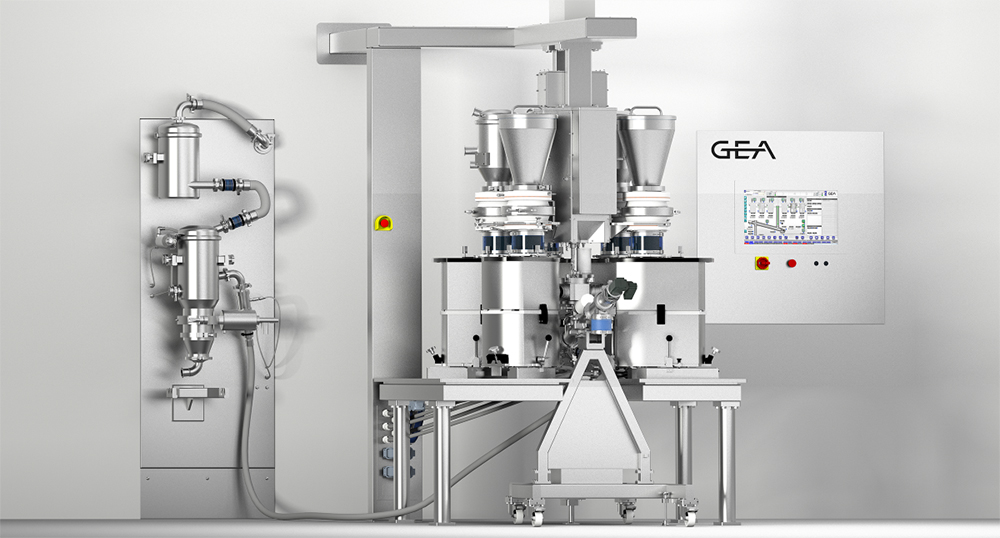It’s been many years since the US FDA launched its Pharmaceutical Quality for the 21st Century program in 2002, prompting GEA and its partners to wholeheartedly support the move to make continuous manufacturing (CM) mainstream.
Even with the backing of a major regulatory agency, however, getting a new manufacturing paradigm accepted by the greater drug production ecosystem is no small undertaking. It can be somewhat overwhelming at first and is often perceived to involve a huge magnitude of change. Yet, first impressions can be misleading!
With a continuous line running at a customer’s site for almost two decades, GEA Pharma & Healthcare has, from the very beginning, led the field with flexible development options that improve commercial-scale production and enable greater process understanding to be achieved with smaller quantities of material.
At the heart of GEA’s fully integrated, powder-to-tablet CM solution is ConsiGma®. This complete portfolio of technologies is designed to transfer powder into finished oral solid dosage (OSD) forms in development, pilot, clinical and production volumes. GEA has not only been helping pharmaceutical manufacturers to evaluate, develop and optimise continuous processing techniques to enable them to bring new products to market faster, the company has spearheaded several collaborations and partnerships that have championed the implementation of CM to highlight its many advantages.

For example, GEA, GSK, Pfizer and G-Con Manufacturing formed a consortium to design and build a modular, autonomous manufacturing environment for continuous OSD form production. Presented with the award for Best Technologies Innovation during INTERPHEX 2015 and subsequently receiving an ISPE Facility of the Year Award (FOYA) in 2016 for Equipment Innovation, this first-of-a-kind portable, continuous, miniature and modular (PCMM) system shortens the timelines involved in tablet production.
Innovators certainly took notice! Back in 2015, for the first time ever, the FDA approved a new treatment for cystic fibrosis (CF) that had been developed and produced using GEA’s ConsiGma® CM platform. Further approvals followed for an antiretroviral medication to prevent HIV/AIDS (2016), a drug to treat breast cancer (2017) and another CF medication (2018).
Of note, a single CM line can be used to process any volume of product — from small quantities for formulation development and design of experiments (DoE) through to clinical trials and full-scale manufacture. This speeds up time-to-market by eliminating lengthy pilot-scale steps, scale-up and tech transfer. Not only does this remove the need for further investment, but regulatory agencies often grant fast-track approval (emergency designations) for CM-derived products. Given that it normally takes 10–15 years to get one new medicine from initial discovery through to regulatory approval, any timeline reductions are, literally, lifesaving.
Partnering to advance continuous tableting technology
In 2022, Hovione and GEA announced a strategic collaboration to advance continuous tableting and dispel the common myths that #GoingConti is both overly complex and too expensive. With their combined efforts, they aim to significantly increase the adoption of CM by providing enhanced capacity, flexibility, standardised equipment, improved quality and increased efficiency. Based on a successful customer-supplier relationship spanning several years, the collaboration combines GEA's engineering expertise with Hovione's development and manufacturing experience. The collective aim is to convince more end users to ramp up the production of OSD forms using continuous tableting technology.
The first concrete example is a new continuous direct compression (CDC) machine from GEA called the ConsiGma® CDC flex (patent applied for). The key advantage is that it’s a more flexible system; it offers both high and low throughput functionality as well being able to operate in both continuous and batch mode.
At the same time, Hovione and GEA have also identified several other technical developments that they want to address, such as speed of changeover (from one product to another), cleaning times and significantly reducing the delivery times of the ConsiGma ® CDC flex units.
“We believe that continuous tableting can offer significant benefits to our customers, not only by expediting time-to-market and reducing development and manufacturing costs… but also by improving product quality and sustainability,” commented a Hovione representative. “Through our collaboration with GEA, we aim to revolutionise the continuous production of oral solid dosage forms, making the technology more accessible and efficient for pharma customers.”

